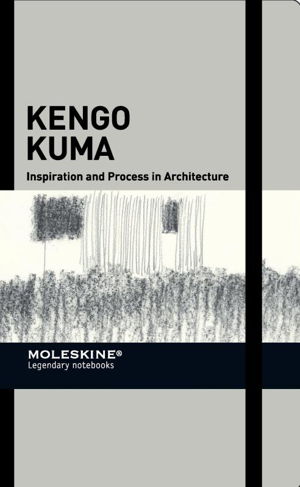
PublishedMoleskine, May 2014 |
ISBN9788867324934 |
FormatHardcover, 144 pages |
Dimensions21cm × 21.7cm |
The objective of Kengo Kuma is to erase architecture: finding harmony between natural and artificial and mediating the encounter between man and the environment. The drawings collected in this book tell the fading of architecture through textures drawn in graphite that overlap different layers of land, building and sky, in a harmonious whole.
Initial sketches go alongside with the study of the technical details that helped to achieve the final result. The use of natural materials - wood, bamboo, stone, rice-paper - merged with technological innovation and compositional skill combines Eastern traditions and look to the future. Among Kuma's major works are Kiro-san Observatory (1995), Water/Glass (1995, received AIA DuPont Benedictus Award), Noh Stage in the Forest, Toyoma Center for Performance Arts (received 1997 Architectural Institute of Japan Annual Award), Nakagawa-machi Bato Hiroshige Museum of Art (received the Murano Prize). Recent works include Nezu Museum (2009, Tokyo), Yusuhara Wooden Bridge Museum (2010), Asakusa Culture Tourist Information Center (2012), Nagaoka City Hall Aore (2012), and Jugetsudo Kabukiza (2013). Outside Japan, Besancon Art Center and Cite de la Musique and FRAC Marseille have been recently completed.

